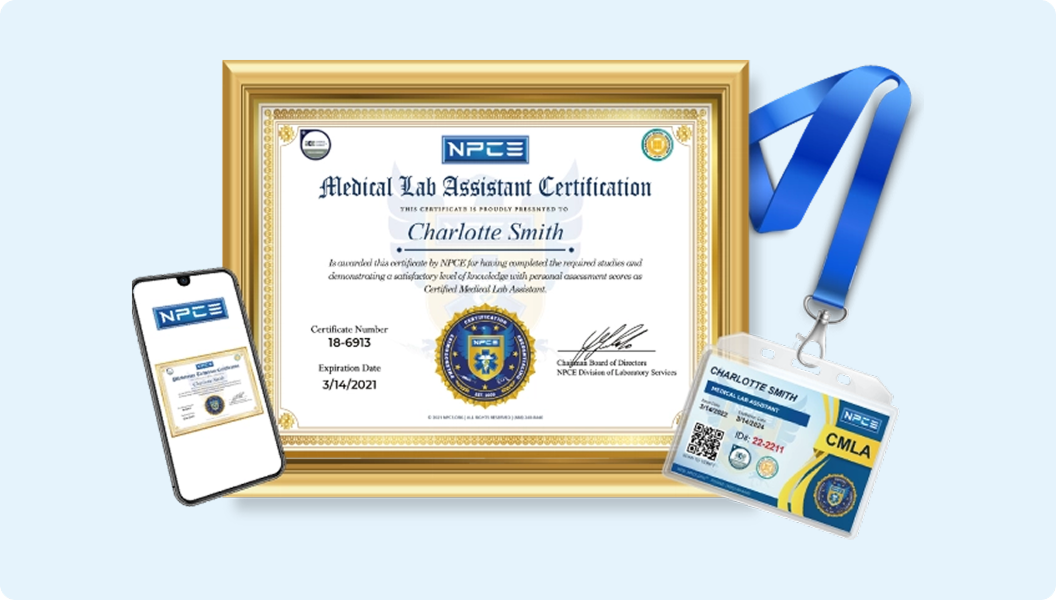Phlebotomist to Lab Assistant
From Phlebotomist to Medical Lab Assistant: A Smart Career Move for 2025 and Beyond


The healthcare industry is constantly evolving, and with it, so are the roles and career paths available to medical professionals. If you're currently working as a phlebotomist—or considering becoming one—you may be wondering what comes next. One of the most valuable and attainable career advancements is transitioning from a phlebotomist to a medical lab assistant.
At NPCE (National Phlebotomy Certification Exam), we’ve helped thousands of professionals launch successful phlebotomy careers. Now, more and more of our certified members are using their NPCE certification as a launchpad into broader clinical roles like laboratory technician, medical technologist, or clinical lab assistant.
So why should you consider this transition? Let’s break down the benefits, opportunities, and practical steps involved.
1. Increased Earning Potential
One of the most immediate benefits of becoming a lab technician is the higher salary. While certified phlebotomists typically earn between $35,000–$50,000 annually, certified lab technicians/assistants can earn $50,000 to $70,000+, depending on experience, credentials, and location.
Lab technicians/assistants often qualify for more comprehensive benefits packages, higher hourly rates, and overtime opportunities that may not be as readily available in entry-level phlebotomy positions.
2. A More Technically Advanced Role
Phlebotomists are trained experts in venipuncture, blood specimen collection, and patient interaction—but lab technicians go further. As a lab technician, you’ll be working behind the scenes on critical diagnostics, including:
- Urinalysis, blood chemistry, and cell analysis
- Microscopic examinations
- DNA and molecular testing
- Quality control and calibration of lab instruments
- Communicating results to physicians or supervisors
This move allows you to work on the science and technology side of medicine, giving you a more intellectually stimulating role.
3. Greater Job Security and Growth Potential
According to the U.S. Bureau of Labor Statistics, employment for clinical lab technologists and technicians/assistants is projected to grow 7% through 2032, faster than the average for all occupations.
By transitioning from phlebotomy to a lab tech role, you are opening the door to more stable and secure employment for years to come.
4. Use Your Phlebotomy Experience to Your Advantage
If you’re already a working phlebotomist, you have a strong foundation in:
- Specimen collection and handling
- Laboratory safety and sanitation
- HIPAA compliance and patient confidentiality
- Communication and bedside manner
This experience makes you an ideal candidate for lab technician training programs. Many programs give credit for prior clinical experience or offer bridge courses that shorten your path to certification.
5. Access to Specializations and Career Diversification
Once you become a lab technician/assistant, a whole new world of career specializations becomes available, including:
- Microbiology
- Hematology
- Molecular biology/genetics
- Immunology
- Pathology assistance
- Forensic lab work
With a strong background in phlebotomy and lab tech skills, you’re well-positioned to move into leadership roles, teaching, or even transition into medical or nursing school down the line.
6. Continued Professional Development with NPCE Support
At NPCE, we are more than just a certification provider—we’re a career partner. We offer continuing education, industry news, and professional resources for our certified members. As you advance in your career, NPCE is here to help with:
- Professional development tools
- Guidance on further certifications
- Support connecting with accredited lab assistant training programs
We believe in lifelong learning and growth, and many of our phlebotomists successfully build long-term healthcare careers using NPCE certification as their first stepping stone.
🧭 How to Make the Transition: A Step-by-Step Overview
If you are ready to take your career to the next level, here is a simplified roadmap to becoming a lab technician:
- Get Certified as a Phlebotomist (if you have not already) Begin with an NPCE-recognized program to build your clinical foundation.
- Gain Real-World Experience Work in hospitals, clinics, or labs to become familiar with healthcare systems and procedures.
- Enroll in a Medical Lab Technician (MLT) Program or (MLA) Medical Lab Assistant Program Choose an accredited program that accepts prior phlebotomy experience. Some offer hybrid (online + clinical) formats.
- Pass Your National Certification Exam Once training is complete, you will need to pass a lab assistant certification such as the NPCE or equivalent.
- Continue Your Education & Consider Specialization The healthcare world is full of paths—find your niche in microbiology, pathology, or even research.
Final Thoughts: Elevate Your Career with Confidence
Phlebotomy is a respected and rewarding profession, but it does not have to be your final stop. By becoming a lab technician, you expand your skill set, increase your income, and gain access to more diverse and meaningful roles in healthcare.
With NPCE certification as your foundation, you have already demonstrated your commitment to patient care.
Ready to grow beyond phlebotomy?
Let NPCE help you take the next step in your clinical journey.
